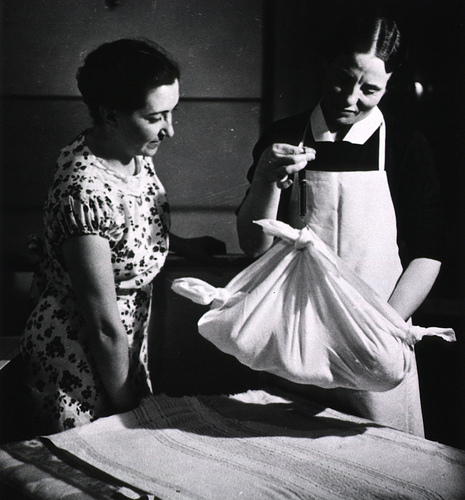
It’s day four of your baby’s life, and the pediatrician just told you that he’s at 14% weight loss, and that you will need to start supplementing. It’s obvious that he needs more milk, but why? Do you have a low supply? Did your milk come in late? Or at all? Or do you have plenty of milk but your baby just isn’t getting it out? What happens when you pump? Can you supplement with your own milk or do you need to use formula? Most likely,the only one who can answer all of those questions is a lactation consultant (IBCLC), and whenever unplanned supplementing is on the menu, seeking out an IBCLC’s help should be as well. So please make an appointment to meet with a lactation consultant.
However, in the meantime, you need to feed your baby. So, how much?
Studies have shown that breastfed babies eat about this much per feeding, at least 8 times a day:
Day One of life – 2-10 ml per feeding
Day Two of life – 5-15 ml per feeding
Day Three of life – 1/2 oz – 1 oz (15-30 ml) per feeding
Day Four of life – 1-2 ounces (30-60ml) per feeding
Day 5 – Day 7: between 2-3 ounces (60-90ml) per feeding
Week 1- Week 2: baby will be working up to 3-4 ounces per feeding by the end of week 2. Baby will take roughly 3-4 ounces per feeding for the first 6 months of life, and then may drink a little less milk when solids are introduced.
“Well,” you say. “That’s answers the question of “how much” for the moms who are only using a bottle for a feeding. But I’m putting my baby to the breast before I give the supplement. So I would need to adjust the above numbers to what my baby needs after a breastfeed – only, I don’t know how much he eats…which kind of puts me back to square one.”
And you’re right. We don’t know how much your baby is taking in while on the boob. He definitely needs a supplement, but probably not the full amounts listed above (due to him probably getting some milk at the breast.) So the question of “how much to put in the bottle” is not settled yet.

But I’ve got some good news.
If you use a paced bottle feeding method to supplement your baby, you don’t need to obsess over the measurements!
A paced bottle feed allows your baby to regulate his intake, which means that he can tell you when he’s had enough. (It also helps to protect your breastfeeding relationship by avoiding nipple confusion/flow preference so is a “win” all around.)
Here is how you pace a bottle feed.
- Hold your baby upright, and brush his lips with the slow flow bottle nipple until he opens his mouth.
- Holding the bottle horizontally so that milk just fills the nipple tip, slide the bottle into his mouth until he is latched deeply and his lips are flanged at the base of the nipple. (You might need to manually pull the baby’s lips out).
- Allow the baby to take about 3-10 “gulps” of milk.
- Twist the bottle nipple down and out of the baby’s mouth, and allow it to rest on his cheek. Don’t take it away or he will get mad! Feeling the nipple resting on his cheek will let him know it’s there when he is ready.
- Your baby will take a break to catch his breath, and if he is hungry, he will start to root for the nipple again.
- Slide the nipple back in and continue this cycle, allowing for frequent burping breaks (every few minutes).
- If baby is drinking the milk very quickly, you can use a pacifier a few times during the feed to help him slow down his intake. A pacifier also teaches him that he will still need to do some “work” for his food, just like when he breastfeeds.
- When the baby stops opening his mouth and rooting for the bottle, or turns his head away, he is finished eating. It takes about 15-20 minutes for baby’s brain to realize that his belly is full, so the bottle feeding should take about that long.
- If the baby drinks all of the milk and still looks hungry, but less than 15 minutes have gone by, let the baby suck on a pacifier for a few minutes. If he still looks hungry after the 15 minute mark, offer him some more milk using the same technique.
If baby shows you any signs of distress below, stop, give him a break, and allow less “gulps” before stopping him the next time.
- Furrowed eyebrows and/or eyes opening wider and wider
- Splayed fingers (giving you the “STOP” sign) or stiffening arms and legs
- Milk spilling from his mouth
- Coughing, choking, gagging, or gasping
- Grimacing
- Flaring nostrils which are a sign that baby is struggling to catch his breath
Here are two videos that I really like, illustrating the paced feed.
https://www.youtube.com/watch?v=TuZXD1hIW8Q
https://www.youtube.com/watch?v=1cvF1nawMNI
So let’s wrap it all up and get on with feeding your baby.
Your Supplementing Plan:
After a breastfeed, offer your baby one ounce of expressed breastmilk/formula. Practice a paced feeding technique with your baby. If he takes the ounce and still wants more, offer him another ounce. If he wants more after two ounces, offer him more. Or, if he takes half an ounce and says he is done, the next time you supplement start with only 1/2 an ounce in the bottle. Trust that your baby’s body is working and that he can communicate his hunger/satisfaction to you!* Follow up as soon as possible with your pediatrician and/or lactation consultant to make sure your baby’s weight gain gets back on track. And know that for most moms, supplementing is a temporary measure. A good lactation consultant should be able to figure out why your baby isn’t getting enough and come up with a plan to get back to exclusive breastfeeding.
As a closing thought, I know that it can be hard to supplement when that wasn’t in your original plan. Many moms feel defeated and as though they are failing in some way when “straight from the tap” isn’t good enough anymore. However, it’s important to remember that sometimes being the “best” simply means meeting your baby’s needs, however you are able. A baby who feels your love and has a full belly is living in a perfect little world, so take credit for that and feel good about yourself as a mom!
*Please note that if you have a pre-term baby, a small baby (under 6 pounds), or even a very sleepy baby you should be working closely with your pediatrician and an IBCLC to determine the correct amount of supplement. These babies sometimes are not trustworthy when it comes to communicating their hunger/satisfaction, and they need a focused feeding intervention.

photo credit: History of Medicine a014808 via photopin (license)photo credit: Thailand-KohSamui-TigerZoo via photopin (license)
photo credit: over the shoulder – day sixteen via photopin (license)

